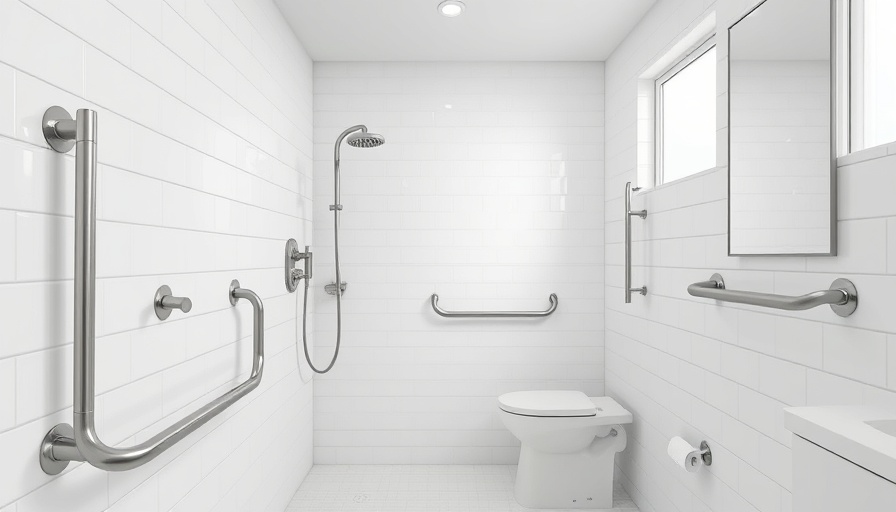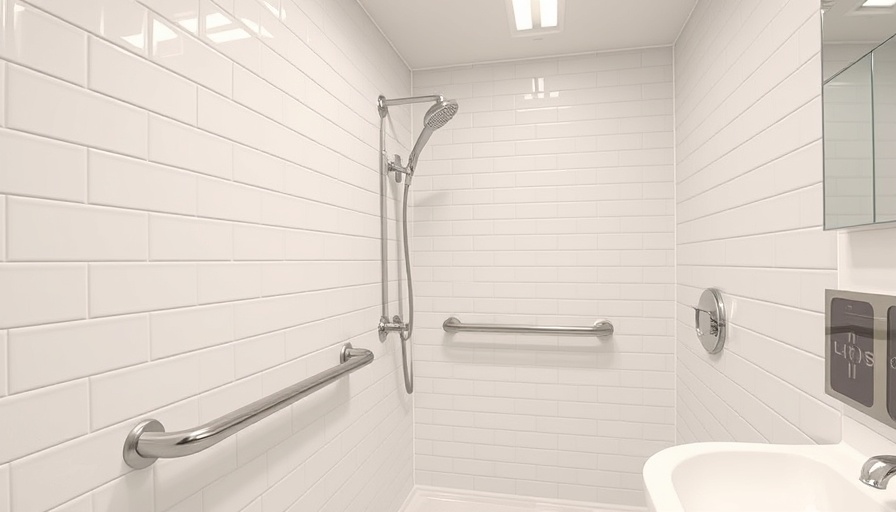
Transforming Spaces: The Impact of Accessible Bathroom Designs
Accessible bathrooms are not merely a convenience; they are essential spaces that foster independence among individuals with mobility challenges. In Ocean County, New Jersey, recent innovations illustrate how inclusive design is reshaping public facilities and private businesses, making them more welcoming for all community members. These changes exemplify how thoughtful renovations can lead to greater dignity and comfort in daily routines.
Barrier-Free Initiatives Foster Inclusion
As the need for accessible restrooms rises, Ocean County has taken concrete steps to address this requirement. Local governments have begun focusing on renovations that not only meet but often exceed legal guidelines. Public restrooms are now equipped with advanced features that enhance usability, such as motion-sensor technology in faucets, spacious stalls, and ADA-compliant fixtures. This transformation is a reflection of the community's commitment to inclusivity, ensuring that everyone, regardless of ability, can access dignified facilities.
A Case Study of Progress: Lakewood Township Community Center
One standout example of accessible bathroom design is found at the Lakewood Township Community Center. Here, the design team engaged in comprehensive research to ensure that the restrooms meet the needs of all users. An important addition to the facility is the installation of adult-sized changing tables, which provide added support for caregivers and individuals using larger mobility devices. The community's involvement in the design process resulted in spaces that are functional and aesthetically pleasing.
Key Features That Make a Difference
The Community Center embodies several beneficial features:
- Automatic Doors: Allow for simple entry, particularly for those who struggle with traditional doorknobs.
- Grab Bars: Strategically positioned to offer essential support, enhancing safety during use.
- Height-Appropriate Sinks: Ensuring that amenities are accessible for individuals of all heights.
Accessibility in Dining: The Restaurant Example
Not only public facilities are embracing accessibility; local restaurants are also paving the way for a more inclusive dining experience. One restaurant in Toms River has taken necessary steps to accommodate guests with disabilities. Their accessible restrooms feature wide doors, low-threshold entrances, and simple-to-use fixtures. More importantly, the staff has undergone training to provide support when needed, enhancing the overall customer experience.
Embracing Change: Why Accessibility Matters
The push towards accessibility in facilities highlights a vital element of community responsibility. In urban, suburban, and rural areas alike, transitioning to inclusive environments can significantly improve the quality of life for all individuals. As community members witness these transformations, it fosters a mindset of acceptance and encouragement.
Future Perspectives: Accessibility as a Standard
Looking ahead, the strides made in Ocean County serve as a model for other regions. With legislation evolving and awareness growing, the expectation for accessible facilities is likely to become a standard rather than an exception. As accessibility features become commonplace, we can envision a future where every member of the community has equal access to comfort and care.
Take Action: Engaging in Your Community
To support continued progress in your area, consider advocating for accessible designs in public and commercial spaces. Connect with local leaders to express the importance of inclusive facilities. By fostering dialogue and emphasizing real-life success stories, we can work collaboratively toward a future where barrier-free designs are a norm, not an exception.
 Add Row
Add Row  Add
Add 




 Add Row
Add Row  Add
Add 

Write A Comment